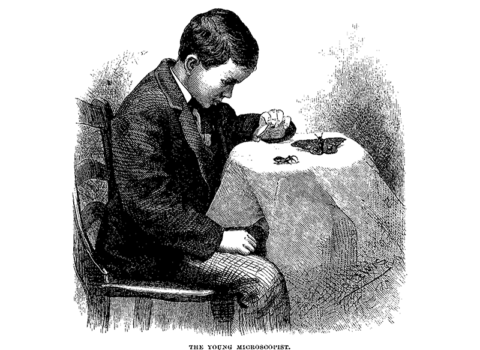Important Details
"The art of the detail is in decline, because the pitiless World Wide Web rejects in-depth reporting in favor of the tweet."
Who remembers the “last supper” of the one-time French President François Mitterrand? Is that simply a trivial detail? Or, on the contrary, is it an element essential for understanding the character of an enormously complex politician?
I was struck by these questions in the wake of two apparently unrelated events: the recent passing of the celebrated American author Tom Wolfe, and my random reading over the Memorial Day weekend. Wolfe was the master of elucidation through detail, even if the detail he provided might have appeared less than pertinent at first. And lo and behold, numerous details jumped out at me while I was perusing, more or less by chance, The Swiss Family Robinson, the classic children’s novel by Johann David Wyss. The author tells the story of a Swiss-German family, shipwrecked on a desert island, who must do what they can to survive. Despite their predicament, their life in the midst of nature is not without its rewards; one day, one of the four sons, armed with a gun, kills an ortolan, a “small dove,” according to Wyss, “esteemed a very great delicacy on account of its exquisite flavor.” Thanks to the wild fig trees that attract these prized birds, the family could expect to preserve “great quantities” of tasty fowl for the rainy season.
Reading this passage, I was suddenly reminded of the menu supposedly enjoyed by Mitterrand in the company of his invited guests on December 31, 1995, one week before his death: thirty oysters, foie gras with capon, and three ortolans, birds of the bunting family that had by then become so rare that hunting them was banned three years later. If the account given by Georges-Marc Benamou in his book Le dernier Mitterrand is to be believed, the former president of the Republic ate those buntings whole—bones, head, and all. Was this the eccentrically joyous act of a dynamic man who wanted to savor life right up until the last moment? Or was it the last cruel treat enjoyed by a cynical politician who had collaborated with the German occupiers during World War II and who, in a certain way, was capable of eating his political rivals alive?
My intention is not to judge François Mitterrand for having eaten an endangered animal but rather to show how deeply a single detail can penetrate my imagination. Of course, sometimes the forest hides the trees, but in my profession as a journalist, I’ve found that a single tree can reveal the authentic essence of its whole entourage. Inspired by Balzac, a furniture connoisseur, Tom Wolfe read Sotheby’s catalogues as a way of learning about Manhattan’s richest people. In a Paris Review interview with George Plimpton, Wolfe recalled a scene depicted in his vicious satirical essay “Radical Chic,” which describes a party given for the Black Panthers in the conductor Leonard Bernstein’s elegant apartment (the Bernsteins helped to raise money for the militant group OR the Bernsteins were helping to raise money for the militant group). Wolfe had noticed that “the platters upon which the Panthers were being served Roquefort cheese balls were gadrooned. You may think that’s a small point, but I think that small points like that can really make a piece.” And how! The absurd contrast between the very rich Park Avenue residents and the radical African-Americans is brightened and heightened by this pattern detail.
Unfortunately, the art of the detail is in decline, because the pitiless World Wide Web rejects in-depth reporting in favor of the tweet. The destruction of the Tom Wolfe/Robert Caro model (Caro is the incomparable author of biographies of Lyndon Johnson and Robert Moses) by Google and Twitter is going from bad to worse; apart from some veteran journalists who are still well compensated, there’s nobody anymore who still has the time or the money to offer extensive observations couched in carefully written prose. Backs to the wall, faced with the migration of advertisers and readers to the free, superficial content of the Internet, the surviving newspapers are shrinking their columns.
All the same, I’m delighted every time I come across a significant detail in an unexpected place. In April, Simon Kuper of the Financial Times was in Paris to interview the novelist Leïla Slimani, Emmanuel Macron’s personal representative for the promotion of French language and culture. In a chic restaurant in the 6th arrondissement, they converse about writing, Moroccan culture, and feminism, but not about French politics, currently being torn apart by a violent dispute between left and right that the charming Slimani seems to glide over. However, to do a genuinely Macron-style job and promote the French “brand,” one must first be an economic liberal at heart, celebrate the new digital economy, and oppose the dusty traditions of the French working class. When the interview is over, in the midst of a national railroad strike and in a neighborhood full of taxicabs, Kuper doesn’t fail his assignment: “Marco Polo is still packed with digesting publishers, but Slimani has to go. She rewraps her scarf just so, produces a leather-bound smartphone and orders an Uber.” A detail worth gold.



